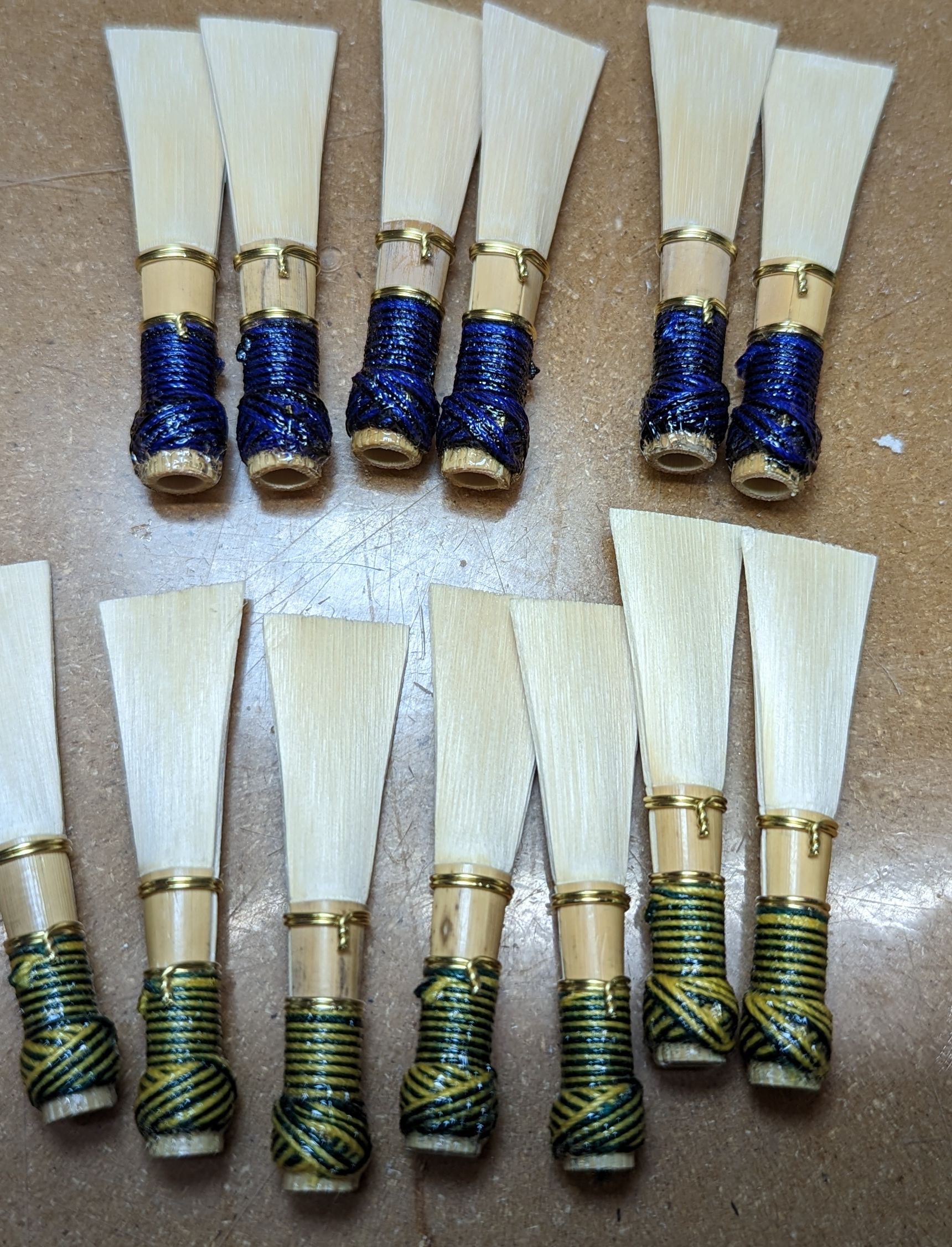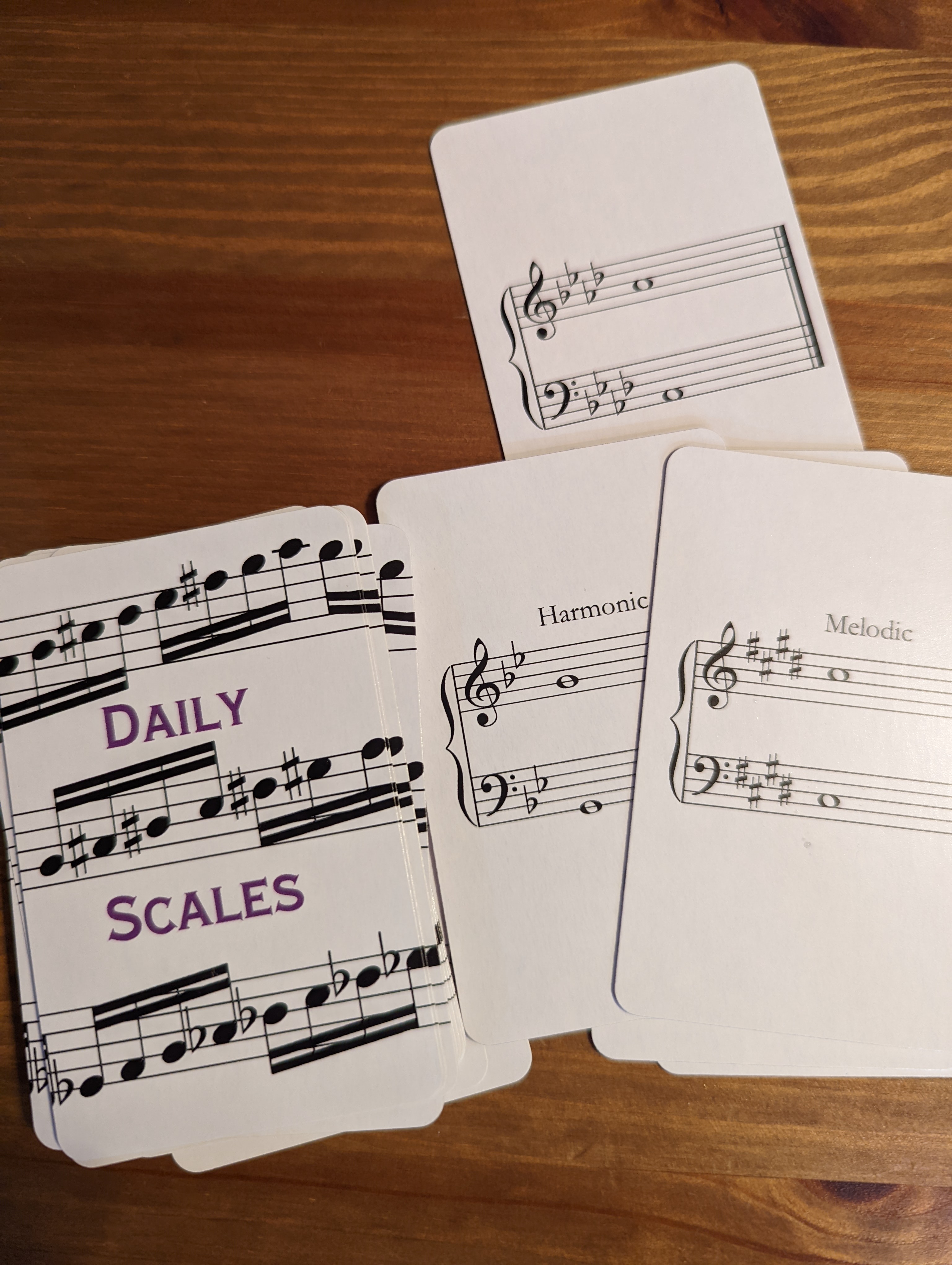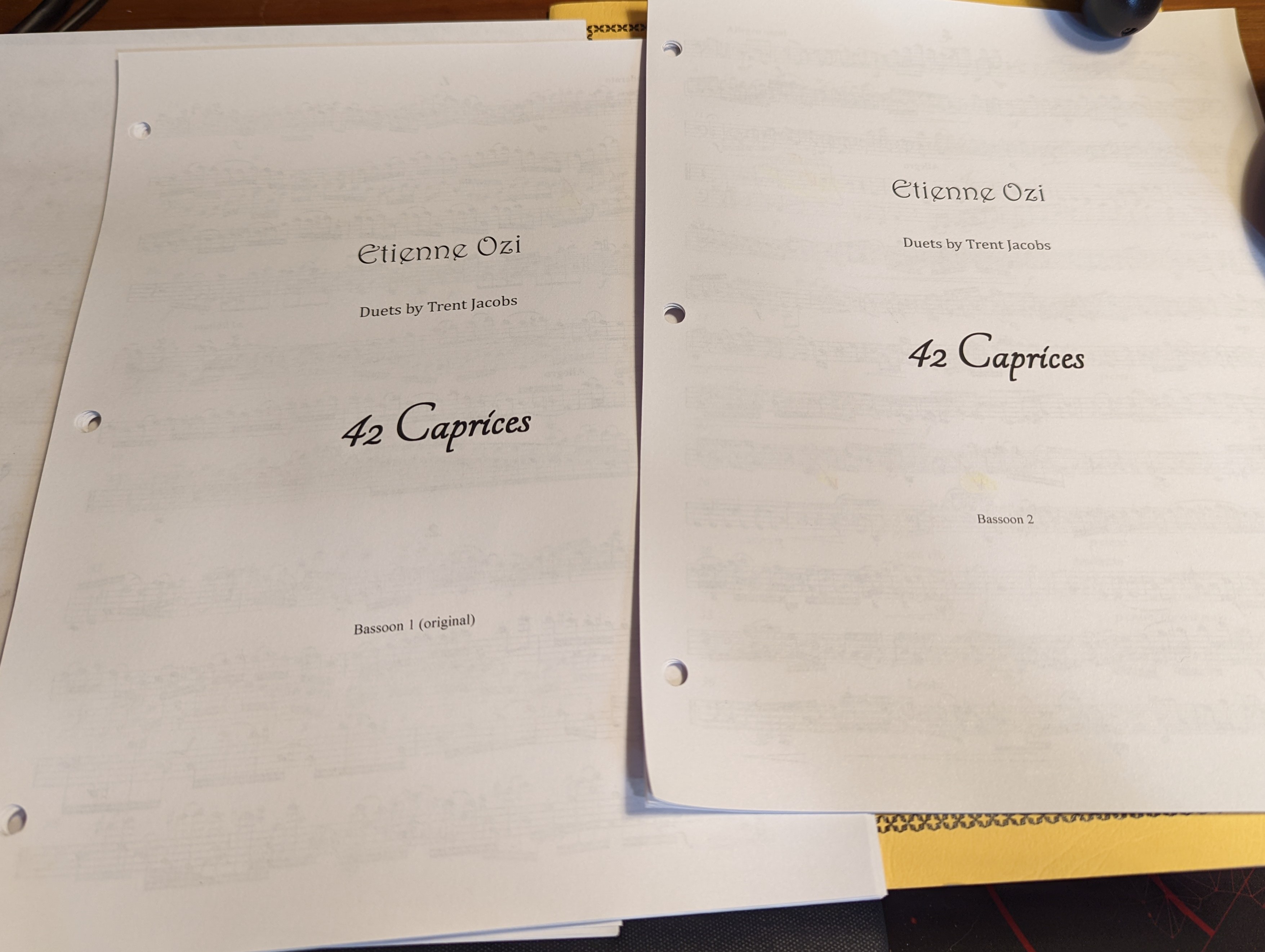Content Warning: Extremely nerdy post about bassoon cane below.
Preface
Most of my reed making does not involve any sort of testing of cane before processing. I take a rather cavalier approach to cane selection, and overall it has worked well for me, with a very high yield of usable reeds from the tube cane I purchase. I generally use a very simple technique of determining a 4-way split of a tube, which only really ensures that the pieces will potentially have the same radial curve. See here for details on this strategy. After that split, I look for the straightest pieces by comparing them to a flat piece of metal and trim them to length. This differs from that process that some reed makers use, that looks for the straightest pieces from each single tube before splitting, and even taking into account vascular bundle density in this process. See this video for this process if you’re interested.
After that, I process it all, and aside from pieces that split on me when handling it, I use every piece that falls within my minimum straightness requirements. Maybe 1 out of 50-100 reeds come out way too soft to make anything out of, and of the pieces that come out too hard, I can usually make those work by scraping down carefully.
So it should come as no surprise that when I say that density testing has not ever been a part of my cane selection process. But in the last few years I thought about how this insight into the cane might either weed out cane that gives me trouble, or might give me thoughts on how to make the end product more consistent, possibly with less hassle in the finishing process. The trick, of course, is deciding if testing the cane for density/hardness is more time consuming than making the occasional bad reed and only finding out when I actually play test it that it’s junk. If it takes me 10 minutes to get a single reed to that stage, out of 100 reeds that’s not a lot of time wasted compared to testing 1000 pieces of cane sometime prior to that stage.
Hardness
I have access to the Reeds ‘n’ Stuff hardness tester at the University of Wisconsin – Eau Claire, and did some testing with it. Essentially I didn’t find it to be a useful metric at all. This kind of test uses pressure on a single point about .5mm in diameter and tests the resistance of that pressure. The more resistance, the harder that spot on the cane, because the bundles of fibers are tighter together and don’t compact much. Less hard cane will offer less resistance. The problem I had with this is that the same piece of cane would show dramatically different numbers depending on where I measured. The same piece of cane would probably be considerably harder in one spot than another, with very few pieces of cane (1% maybe) showing consistent numbers when measured. I would measure straight down the center of a piece of gouged cane, so in theory I would always be measuring the same thickness for every piece, and on every spot on that piece. Without being able to get any consistent metric, it was hard to tell if any measurable difference was resulting in different quality reeds.
I tested 100 pieces and also tracked them individually to see if they changed ratings when I soaked and then dried the individual pieces. Overall there was no a consistent trend. If anyone is really interested, I have a spreadsheet. When I made the reeds, in the end I found no real distinction between generally harder pieces compared to generally softer ones.
Density
A couple years after the Hardness test I got interested again and decided to get a scale and do some actual density testing. This is considerably more time consuming than the hardness test, and is messier. This process involves weighing a piece of cane, and then submersing it in water and seeing how buoyant the cane is by measuring how much it floats, by weighing it again using a contraption that pushes the cane into the water. More dense piece of cane will want to sink in the water more, creating less of a difference between the dry and submerged weight than a less dense piece of cane (that has more air pockets in it and wants to float more). Compared to hardness testing, which takes about 3 seconds per piece of cane to measure, this takes at least 20 seconds per piece of cane. If you’re making 20 reeds a month for yourself that’s not a great time commitment, but I spent a full four hours measuring a significant amount of cane for my reed making business, and that’s more than I would ultimately spend in the pre-gouging and gouging stages combined for all of that cane. And I only got about half way through it all. A large portion of the cane I have cut to length and pre-gouged has not yet been measured.
This lead me to a new experiment that I’m in the middle of right now. But I’ll get to that in a moment.
My idea is that I still want to use as much cane as possible, but if I weed out the most and least dense pieces of cane, I get some consistency I wouldn’t have had (in theory) so separating the cane into Low, Medium, and High density, and then adjusting my gouge to those three levels might mean that I end up with similar end-result hardness in my reeds. Basically I decided to gouge the most dense cane the thickest, so when I profile the cane I’ll be using slightly softer cane farther from the bark. The softest cane would be gouged thinner, so the profile would end up closer to the bark which is harder. Medium cane would be somewhere in the middle. Resetting the gouger is another time sink in the overall process. If this was designed to save me time in the end, it looks like it might be a wash in the end, if not considerably less time efficient.
My experiment then is to see just how different the most and least dense/buoyant cane actually is. I have, as of this moment, a number of blanks drying that are at the extreme measurements of the density test. I gouged them all in my “medium” gouge setting, and have done all the prep work the same on all of them, except that I marked them as either “soft” or “hard”. They were all gouged the same day, soaked and dried together, and today I shaped and profiled them all in a batch.
So far I can say only one thing about them: the hardest pieces were the only ones that I had issues with the cane splitting along the grain when handling them. I tried to get 7 of each extreme, and had to actually pull 3 additional pieces of the “hard” batch out because 3 of my original group were brittle and split apart when I was gouging them. Just right up the middle of the cane along the grain. And one more of the hard batch split on me when folding in preparation for forming the tube. We have yet to see if I have some split in the forming process more than the “soft” pieces. I guess this makes sense; the harder cane is more brittle and prone to breaking. The thing is that I would have weeded these pieces out at this stage even if I hadn’t measured them.
To be continued……



